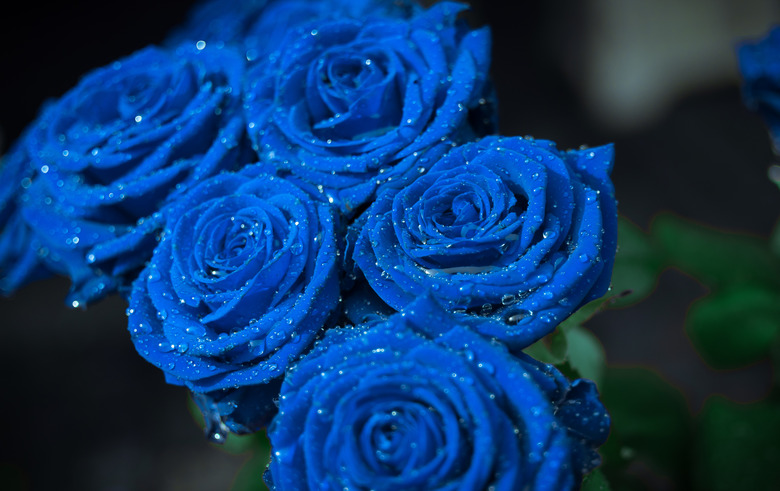Different Types Of Blue Rose Flowers
Technically, a blue rose cannot naturally occur because roses (Rosa spp.) do not naturally contain blue pigment. Over the years, however, the quest for blue roses has been something of a holy grail for rose breeders and fanciers. Now gardeners can find those with different types of blue or near-blue shades — marketed with "blue" in the cultivar names — on the market. And one company claims to have produced the first "true" blue rose, marketed since 2009 but still unavailable in the U.S., although many purists claim that the color is not true blue.
Blue Girl Rose
'Blue Girl,' also sometimes called 'Cologne Carnival' or 'Koelner Karneval,' is a large flowered hybrid tea rose with moderate fragrance. It originated in Germany and was the Rome Gold Medal winner in 1964. Like other roses marketed as "blue," Weeks Roses notes that the Blue Girl rose actually is colored with shades of lavender. It's a commonly available rose in many plant catalogs and nurseries.
Blue Nile Rose
'Blue Nile' is a vigorous hybrid tea rose with deep lavender-mauve double flowers that have violet touches. The fragrant flowers may form in singles or in clusters above distinctively large, olive-green leaves.
Shocking Blue Rose
Like all floribundas, or free blooming types, 'Shocking Blue' produces masses of single or clustered blooms of very large size over an extended period. The classic rose-shaped flowers are a deep mauve, which is attractive against its glossy dark green leaves. It is often used in rose breeding to impart color to other seedlings. It is heavily perfumed, with a distinctly citrus fragrance. It grows to 2 feet with a spread of 3 to 4 feet.
Blue Moon Rose
This cultivar may be the closest thing to a traditionally hybridized true blue rose available and, in consequence, is quite popular. It is a fragrant tea rose shrub (a 'Blue Moon' climbing type exists as well) best suited for warm sheltered areas of the garden. Grow 'Blue Moon' against a wall or fence in full sun. This plant won the Rome Gold Medal in 1964.
Blueberry Hill Rose
For something slightly different, 'Blueberry Hill' is a semi-double floribunda rose sporting huge — yet delicate-looking — blooms with a sweet apple scent. The National Gardening Association notes that this rose bears mauve-to-lavender flowers. It blooms profusely all summer and resembles an azalea bush in form and bloom cover. The bush grows up to 4 feet high.
Florigene-Suntory Applause Rose
Genetic engineering has given us the first true blue rose, according to Sunstory. Geneticists from Florigene Ltd., an Australian biotechnology firm (part of the Japanese Suntory group of companies) cracked the code after numerous experiments to extract a color-coding gene from different types of blue flowers, such as petunias and pansies, and an enzyme to unlock pigment from irises, to create a rose that has nearly 100 percent blue pigment.
Diehard rose breeders may consider that cheating, and the panel is still out on whether the blue is really a true blue or mauve. These plants have been available on the Japanese market since November 2009 under the varietal name 'Applause,' but they are not available elsewhere, and scientists are still working to develop the color further.
